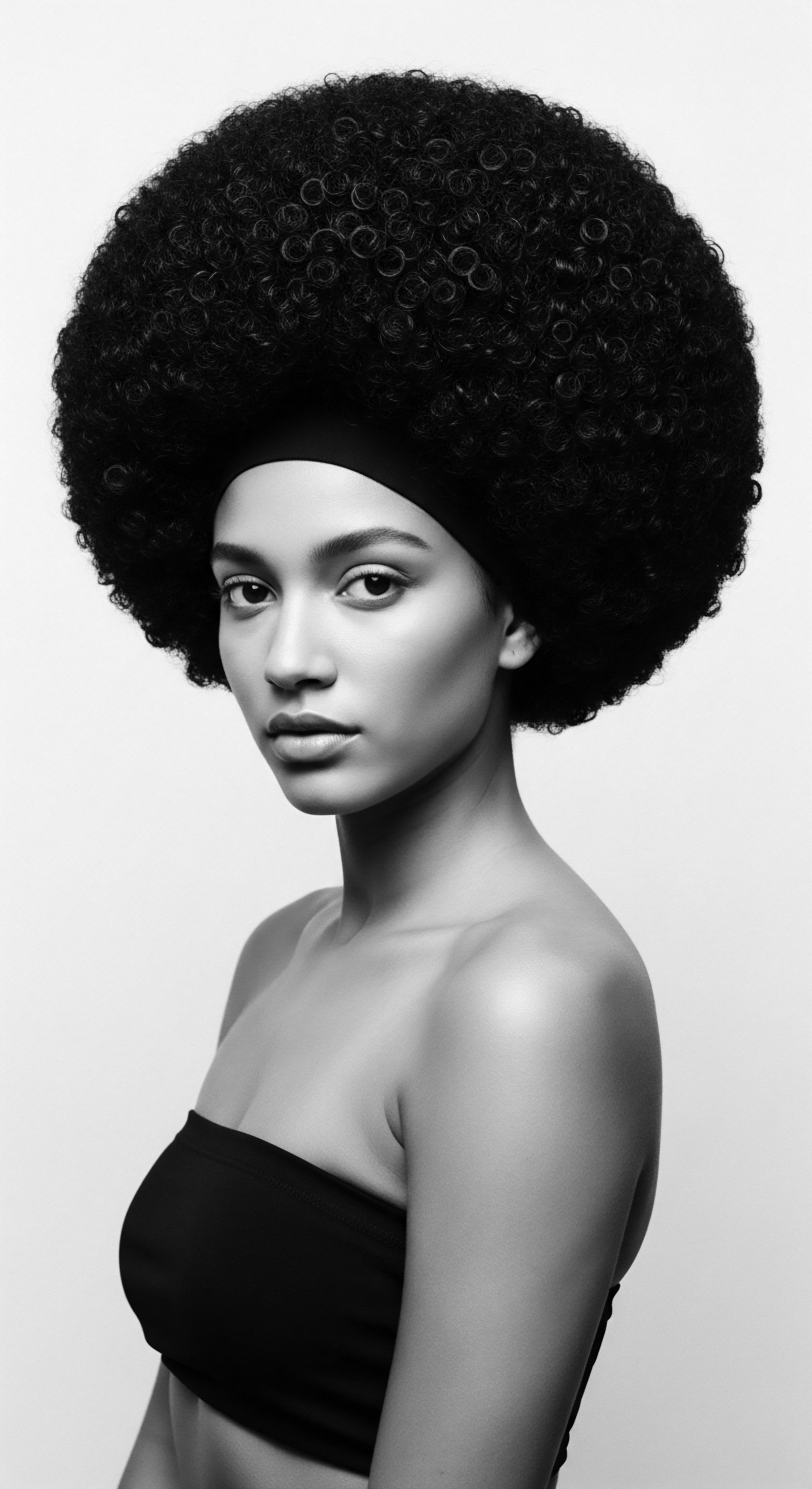
Fundamentals
Systemic prejudice, in its simplest rendering, refers to the ingrained biases and unfair treatments that permeate the very structures and institutions of a society. It is not merely individual acts of unkindness or isolated incidents of discrimination. Rather, it denotes a deeper, more pervasive pattern, often operating subtly, that consistently disadvantages particular groups while privileging others.
This collective bias is embedded within policies, practices, cultural norms, and unspoken expectations, creating an environment where disadvantage is reproduced across generations. It is a societal arrangement that, by its very architecture, sustains inequality.
For textured hair heritage, this concept holds particular weight. The beauty standards prevalent in many societies have historically elevated Eurocentric hair types, implicitly or explicitly deeming coiled, kinky, or wavy textures as less desirable, unprofessional, or even unruly. This aesthetic preference, seemingly benign on the surface, transforms into a powerful instrument of systemic prejudice when it shapes school dress codes, workplace appearance policies, or social acceptance.
These institutional directives, whether written or unwritten, become mechanisms through which individuals with textured hair face barriers to education, employment, and social mobility. The daily lived experiences of those with Black or mixed hair often stand as poignant testaments to these pervasive biases.
Systemic prejudice signifies biases woven into society’s very fabric, leading to consistent disadvantage for specific groups.
Consider the early conditioning within communities where certain hair textures were labeled “good hair” and others “bad hair.” This internalizing of external, prejudiced standards represents a profound impact of systemic prejudice, shaping self-perception from a tender age. Such distinctions are not inherent to hair itself but are socially constructed, serving to maintain a social hierarchy where Eurocentric features occupy a position of dominance. The journey of understanding systemic prejudice begins with recognizing these seemingly small, yet deeply consequential, judgments that become codified into broader societal norms.
The meaning of systemic prejudice, therefore, extends beyond individual acts. It encompasses the collective societal behaviors that reinforce exclusion. This includes everything from media portrayals that underrepresent textured hair to the lack of product availability for specific hair types, all contributing to an environment where one’s natural heritage is subtly, yet persistently, undervalued.

Intermediate
At an intermediate level, the meaning of systemic prejudice expands to encompass its operational mechanisms and its historical lineage, particularly as it relates to textured hair heritage. This understanding acknowledges that such biases are not accidental but are often the residual effects of historical power imbalances and colonial legacies. The designation of textured hair as “unprofessional” or “unruly” directly traces back to eras when dominant groups sought to assert control and impose their cultural norms upon subjugated populations. This historical context reveals how beauty standards were weaponized, becoming tools of social control and assimilation.
The historical roots of prejudice against textured hair are deep, stretching back to the transatlantic slave trade. Enslaved Africans were often stripped of their traditional hair adornments and styling tools, their heads sometimes shaved upon arrival, as a deliberate act of dehumanization and cultural erasure. This practice severed ties to ancestral identity, forcing a conformity that began with the very strands upon one’s head. Over generations, this enforced suppression led to internalized beliefs about the inferiority of natural hair, compelling many to seek chemical or heat-based alterations to align with imposed beauty ideals.
Historical power dynamics shaped systemic prejudice against textured hair, turning aesthetic preferences into tools of social control.
A potent illustration of this historical oppression manifests in the Tignon Laws of 18th-century Louisiana. Enacted in 1786, these laws compelled free women of color to cover their hair with a tignon, a type of headscarf. The legislative intent was clear ❉ to diminish their perceived social standing and attractiveness, particularly in the eyes of white men, by forcing them to conceal their elaborate and culturally rich hairstyles.
Despite this oppressive measure, these resilient women transformed the tignon into an act of defiance, adorning their headwraps with luxurious fabrics and intricate designs, thus reclaiming agency and artistry within constraint. This historical example underscores how systemic prejudice operates through legal and social mandates, yet also reveals the enduring spirit of cultural preservation.
The systemic prejudice against textured hair extends into various spheres, manifesting in a multitude of ways ❉
- Educational Environments ❉ School policies frequently penalize students for wearing natural styles like braids, locs, or afros, often citing them as “distracting” or violating dress codes. These policies disproportionately affect Black children, impacting their self-esteem and sense of belonging.
- Workplace Settings ❉ Professionals with textured hair encounter perceptions of being “unprofessional” or “unpolished.” A 2023 study found that Black women’s hair is 2.5 Times More Likely to Be Perceived as Unprofessional compared to white women’s hair, and approximately two-thirds of Black women alter their hair for job interviews. This pervasive bias affects hiring, promotion, and daily interactions, creating a hidden tax on Black and mixed-race individuals.
- Media Representation ❉ The scarcity of diverse textured hair types in mainstream media, coupled with the glorification of straightened or loosely waved styles, perpetuates a narrow beauty ideal. This lack of positive imagery contributes to internalized racism and negative self-perception within Black communities.
- Product Availability and Research ❉ Historically, the beauty industry has underserved the textured hair community, with fewer products specifically formulated for coiled and kinky hair, and a greater prevalence of products containing potentially harmful chemicals marketed towards straightening. This gap reflects a systemic oversight rooted in the prioritization of Eurocentric beauty standards.
Understanding these interwoven strands of historical context and contemporary manifestation allows for a more comprehensive interpretation of systemic prejudice. It is not merely about individual preferences but about the enduring legacy of societal structures that continue to marginalize and disadvantage based on hair texture. The very concept of “good” versus “bad” hair is a direct artifact of this prejudice, influencing personal choices and societal interactions across generations.
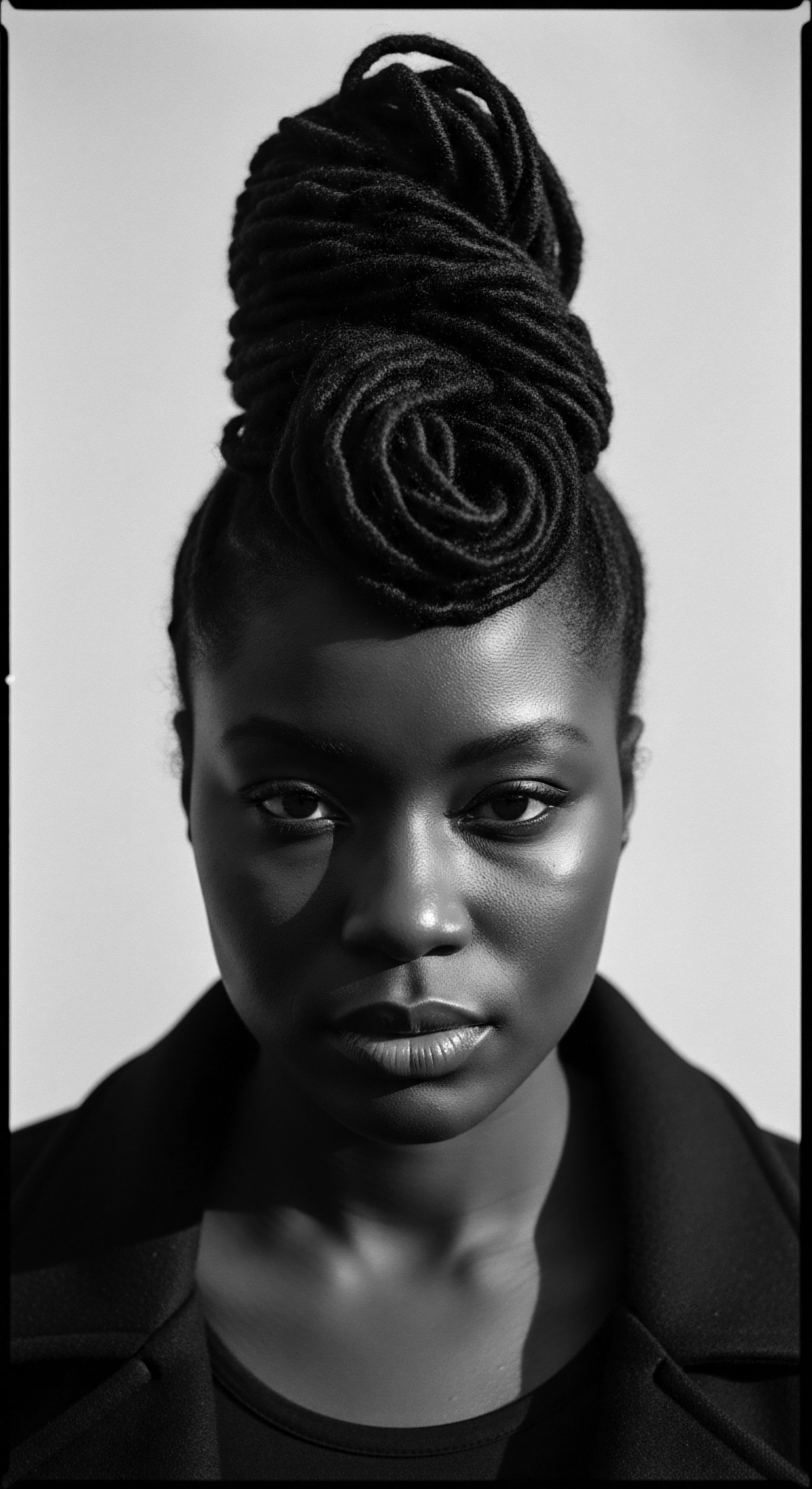
Academic
The academic definition of Systemic Prejudice, particularly when viewed through the lens of textured hair heritage, delineates a complex, self-reinforcing societal apparatus that systematically disadvantages individuals based on phenotypic characteristics associated with racial or ethnic identity. It is a profound manifestation of structural inequality, wherein implicit biases and explicit discriminatory practices become codified within institutional frameworks, cultural narratives, and socio-economic stratifications. This goes beyond isolated incidents of individual bias, instead signifying a pervasive, often invisible, mechanism that consistently reproduces and amplifies disparities. Its meaning is thus not merely a descriptive statement but a critical analytical tool for discerning the deep-seated mechanisms of social control and exclusion that shape lived experiences.
The historical trajectory of systemic prejudice against textured hair reveals a deliberate construction of aesthetic hierarchies that served colonial and post-colonial power structures. Pre-colonial African societies celebrated hair as a profound marker of identity, status, spirituality, and tribal affiliation, with diverse styles communicating intricate social messages. The imposition of Eurocentric beauty standards during the transatlantic slave trade and subsequent colonial periods was a calculated strategy to dismantle these indigenous systems of meaning and to enforce a racialized hierarchy.
This involved the forced shaving of heads, the denigration of natural textures as “nappy” or “unprofessional,” and the promotion of straightened hair as a prerequisite for social acceptance and economic survival. This historical imposition laid the groundwork for contemporary forms of discrimination, where hair texture operates as a proxy for racial identity, triggering a cascade of negative social and psychological consequences.
One particularly insightful perspective examines the Psychological Significance of hair within Black communities as a site of both personal identity and collective struggle. As Mbilishaka et al. (2020) posit, hair discrimination constitutes a social injustice characterized by unfairly regulating and insulting people based on hair appearance. Their research, utilizing a guided hair autobiography method with 90 African American community members, revealed that while texture, length, and style were primary entry points for discriminatory behaviors, factors such as color, hair augmentation, density, and product choice also served as tools of “othering” within a Eurocentric aesthetic value system.
The narratives consistently demonstrated that both men and women experienced interpersonal rejections early in their development, spanning emotionally intimate family settings to public environments like schools. A predominant emotional response to these rejections was sadness, underscoring the deep personal toll of this systemic marginalization. This rigorous qualitative analysis extends beyond mere anecdotal evidence, providing empirical backing for the pervasive psychological impact of hair-based prejudice, illustrating how external societal judgments become internalized, shaping self-worth and belonging.
The implications of this historical and psychological grounding extend into several interconnected fields ❉
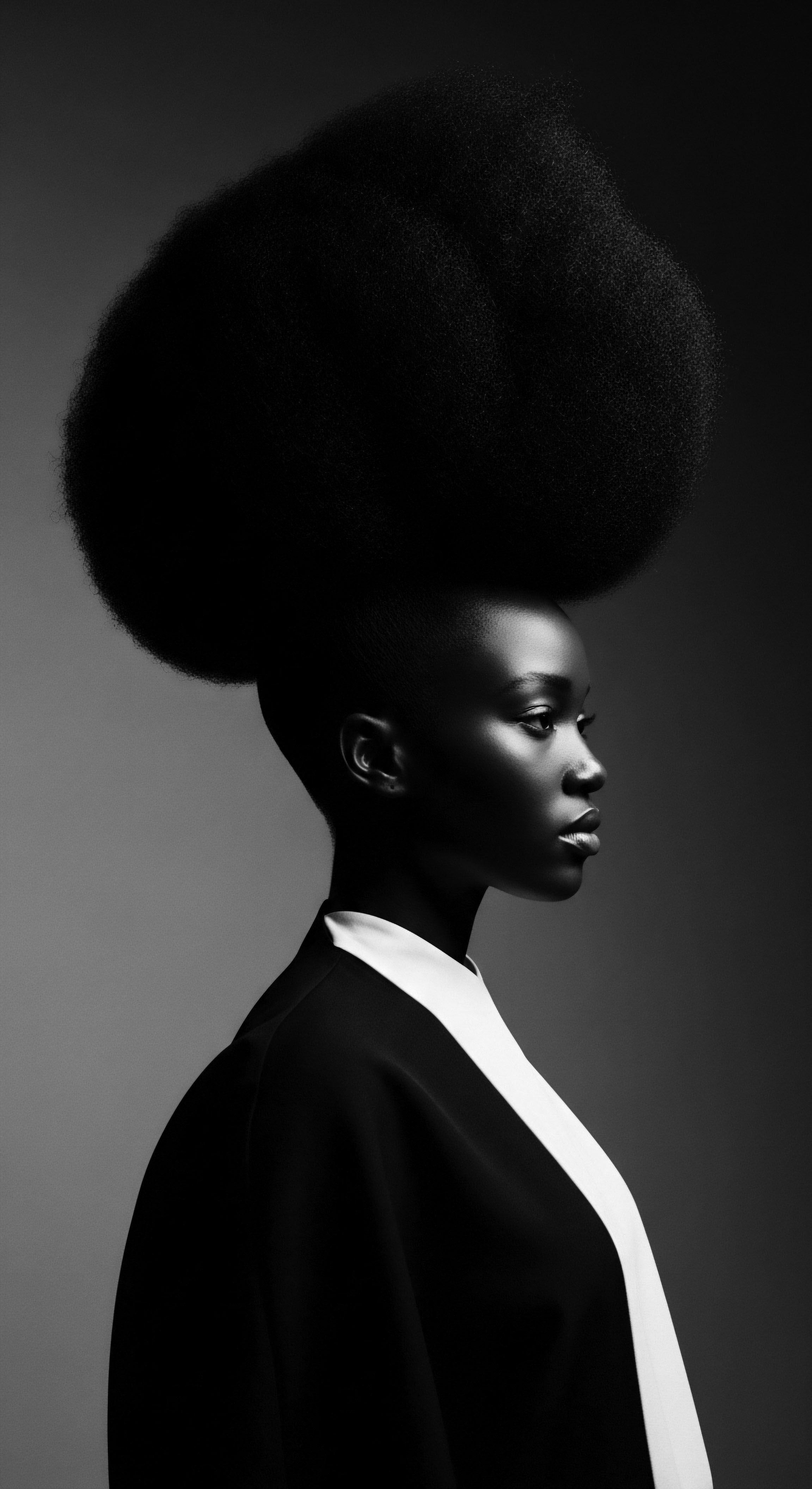
The Socio-Economic Ramifications
Systemic prejudice against textured hair is not merely a matter of personal preference or aesthetic judgment; it carries tangible socio-economic repercussions. Discriminatory practices in employment, for instance, lead to diminished opportunities and wage gaps. Black women, in particular, face a heightened likelihood of being perceived as unprofessional due to their hair, impacting their ability to secure interviews, gain promotions, or even retain employment. The imperative to conform to dominant hair norms often necessitates costly and potentially damaging hair treatments, representing an economic burden that disproportionately affects these communities.
The passage of legislation such as the CROWN Act (Creating a Respectful and Open World for Natural Hair) in various U.S. states represents a legislative attempt to dismantle this form of systemic prejudice, recognizing hair discrimination as a form of racial bias.
Systemic hair prejudice translates into tangible socio-economic burdens and psychological distress for textured hair communities.
This phenomenon of systemic prejudice can be further explored through its manifestations in the medical realm. Misconceptions and biases within healthcare systems, often rooted in historical racism, affect the quality of care received by Black individuals. A study noted that Black women may feel compelled to alter their hair and appearance to be taken seriously by medical professionals, highlighting how systemic biases permeate even health-related interactions.
The prevalence of certain dermatological conditions, such as Traction Alopecia and Central Centrifugal Cicatricial Alopecia (CCCA), which disproportionately affect Black women, can be linked to the societal pressure to use chemical relaxers and high-tension styles to conform to Eurocentric standards. This connection reveals a profound link between societal expectations, hair care practices, and public health outcomes, illustrating how systemic prejudice can literally affect physical well-being.
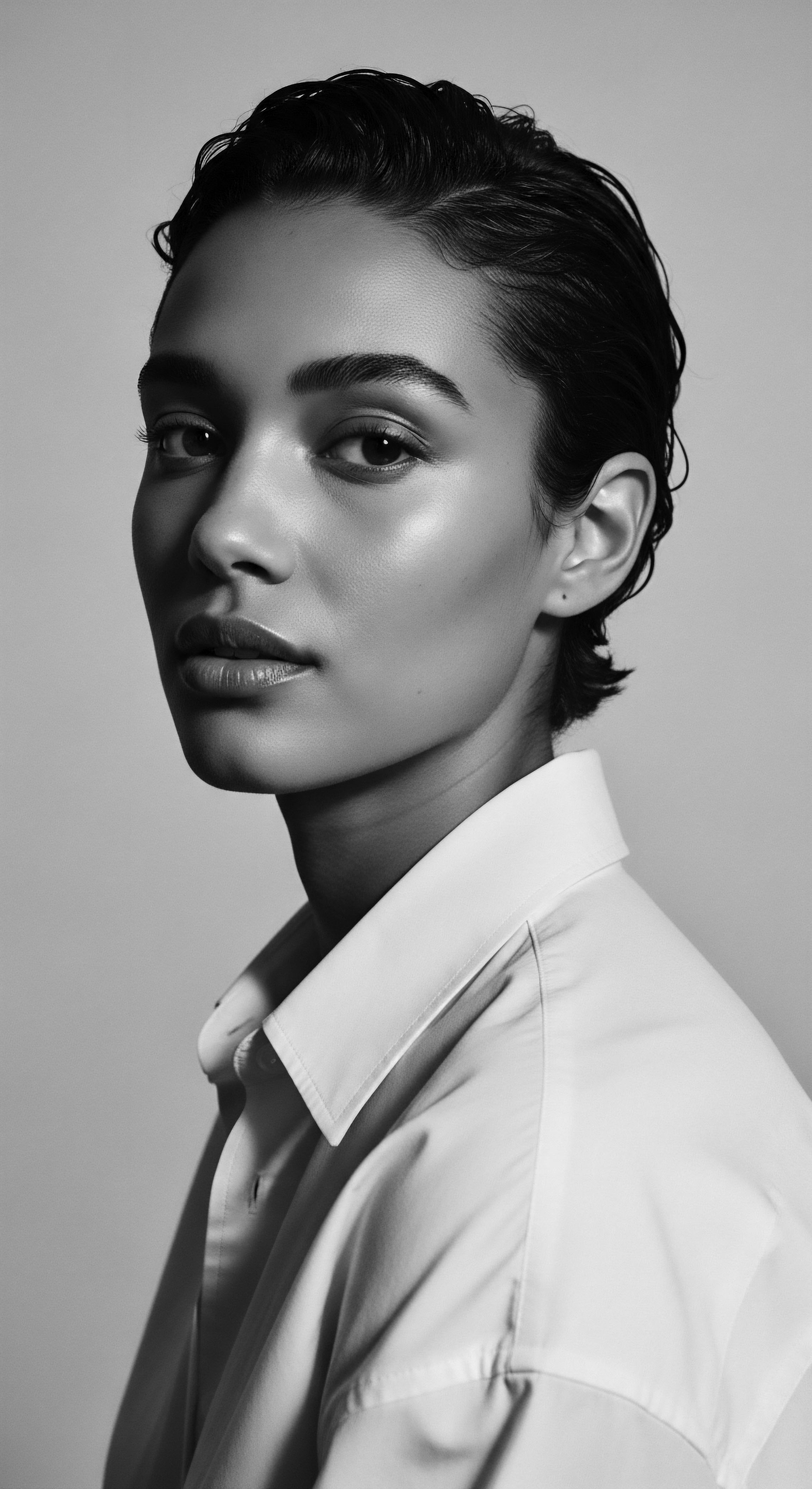
Cultural Resilience and Counter-Narratives
Despite the pervasive nature of systemic prejudice, textured hair communities have consistently demonstrated remarkable resilience and agency in preserving and celebrating their hair heritage. This enduring spirit is visible in the continuity of traditional styling practices, passed down through generations, which serve as acts of cultural affirmation. The historical adaptation of the tignon from a symbol of oppression to an expression of vibrant identity stands as a powerful testament to this. Similarly, the Natural Hair Movement of the 1960s, alongside the broader Civil Rights Movement, politicized natural hair as a symbol of self-acceptance and protest, challenging Eurocentric beauty norms and reclaiming ancestral aesthetics.
The academic understanding of systemic prejudice in this context also demands an examination of intersectionality, recognizing that the experiences of discrimination are compounded by other social identities, such as gender, class, and nationality. Black women, for example, often face a unique burden of hair discrimination due to the intersection of racial and gender biases. This nuanced perspective underscores that systemic prejudice is not a monolithic entity but a complex web of interconnected disadvantages that vary in their impact across diverse Black and mixed-race populations. The ongoing scholarly inquiry into these dynamics seeks not only to delineate the problem but also to illuminate pathways toward equitable and culturally respectful societal norms.
| Historical Period/Context Pre-Colonial Africa |
| Manifestation of Prejudice N/A (Hair as cultural marker) |
| Cultural Response/Resilience Diverse styles signifying identity, status, spirituality. |
| Historical Period/Context Transatlantic Slave Trade |
| Manifestation of Prejudice Forced shaving of heads, denigration of natural textures. |
| Cultural Response/Resilience Preservation of braiding patterns, hidden messages in styles (e.g. cornrows as escape maps). |
| Historical Period/Context 18th Century Louisiana |
| Manifestation of Prejudice Tignon Laws mandating head coverings for free women of color. |
| Cultural Response/Resilience Adornment of tignons with luxurious fabrics, creating new expressions of style and defiance. |
| Historical Period/Context Post-Slavery to Mid-20th Century |
| Manifestation of Prejudice Internalized racism, pressure to chemically straighten hair for acceptance. |
| Cultural Response/Resilience Development of Black hair care industry pioneers (e.g. Madam C.J. Walker), communal hair rituals. |
| Historical Period/Context 1960s Civil Rights Era |
| Manifestation of Prejudice Continued workplace/school discrimination against natural hair. |
| Cultural Response/Resilience Emergence of the Afro as a symbol of Black pride and resistance. |
| Historical Period/Context Contemporary Era |
| Manifestation of Prejudice Subtle biases, microaggressions, lack of representation, persistent "unprofessional" labels. |
| Cultural Response/Resilience CROWN Act legislation, Natural Hair Movement resurgence, advocacy for inclusive beauty standards. |
| Historical Period/Context This table illustrates the continuous interplay between oppressive systemic forces and the enduring creativity and strength of textured hair communities across history. |

Reflection on the Heritage of Systemic Prejudice
The journey through the intricate layers of systemic prejudice, particularly its profound connection to textured hair, beckons us to consider not just its historical arc but its enduring resonance within the very soul of a strand. This exploration reveals that hair, far from being a mere aesthetic adornment, serves as a living archive of identity, a sacred connection to ancestral wisdom, and a resilient testament to enduring spirit. The legacy of systemic prejudice has attempted to sever this connection, to diminish the inherent beauty and cultural richness held within each coil and curl. Yet, in defiance of these oppressive forces, the heritage of textured hair persists, whispering stories of survival, adaptation, and profound self-acceptance.
We witness echoes from the source, from ancient African traditions where hair communicated an entire universe of social standing, spiritual beliefs, and communal ties. These were not simply styles; they were living expressions of personhood, carefully cultivated and adorned. The violent disruption of these practices during colonial eras, through forced conformity and the imposition of foreign beauty ideals, represents a wound in the collective memory.
However, the tender thread of care, passed down through generations in hushed conversations and communal grooming rituals, ensured that this heritage was never truly lost. These rituals, often performed in intimate spaces, became acts of quiet rebellion, preserving knowledge of natural ingredients, protective styles, and the profound sanctity of one’s own hair.
Today, the unbound helix continues its journey, a vibrant testament to resilience and self-determination. The ongoing advocacy for the CROWN Act, the burgeoning natural hair movement, and the reclaiming of traditional styles are not simply fashion trends; they are profound declarations of identity, acts of healing, and affirmations of ancestral pride. Understanding systemic prejudice in this context is not about dwelling in past hurts, but about recognizing the historical roots of present-day challenges to inform a more equitable and respectful future.
It is about honoring the wisdom embedded in every hair practice, acknowledging the science that validates ancestral knowledge, and celebrating the diverse expressions of textured hair as an inherent part of human beauty. The definition of systemic prejudice, therefore, must always include its power to distort self-perception and its challenge to the inherent value of diverse heritage, urging us to dismantle these structures and champion a world where every strand is celebrated as a unique and precious part of the grand human story.
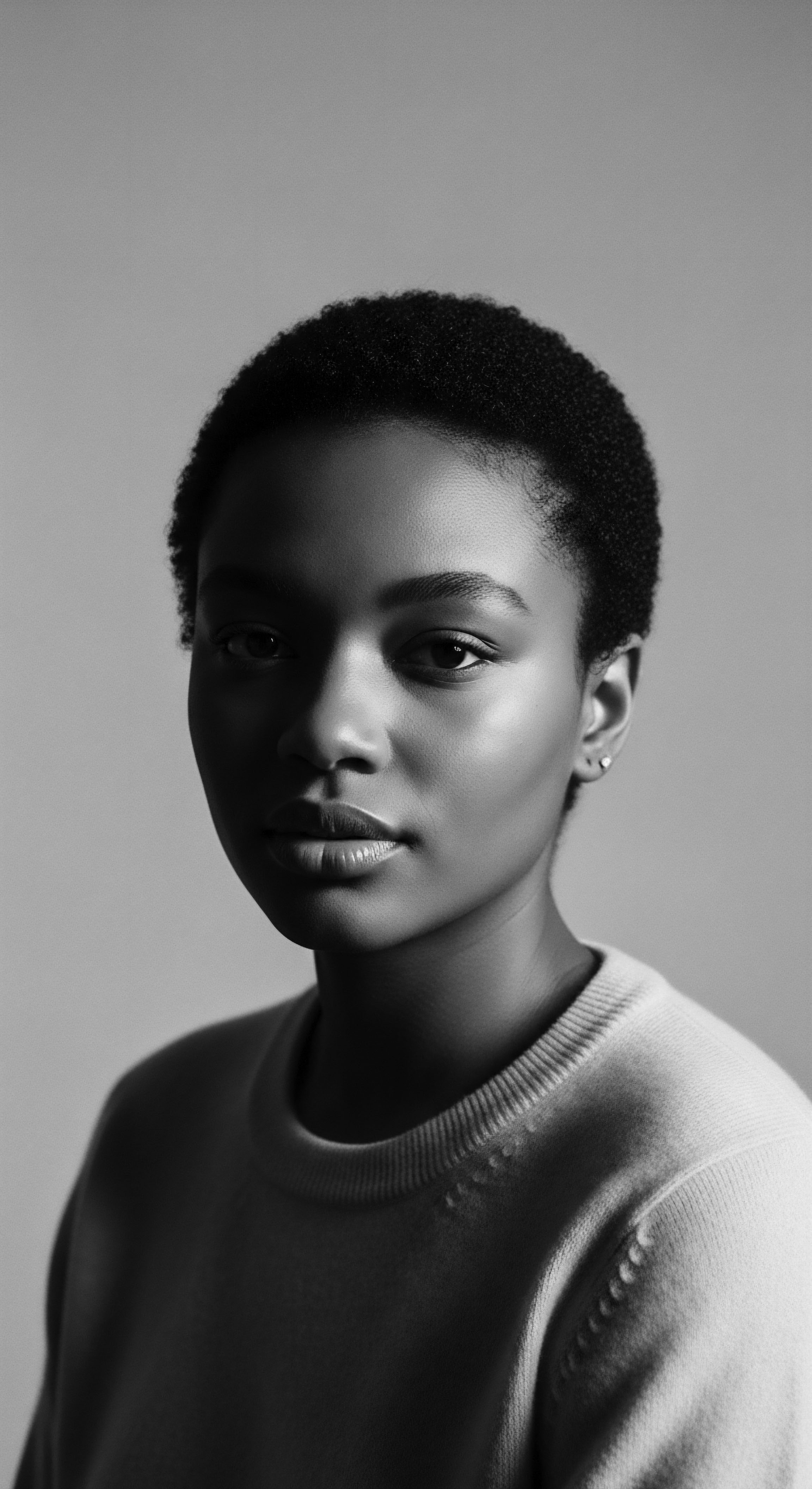
References
- Byrd, A. D. & Tharps, L. L. (2001). Hair Story ❉ Untangling the Roots of Black Hair in America. St. Martin’s Press.
- Dabiri, E. (2020). Twisted ❉ The Tangled History of Black Hair Culture. Harper Perennial.
- Mbilishaka, A. M. Clemons, T. Hudlin, L. Warner, D. & Jones, A. (2020). Don’t touch my hair ❉ Decoding Afro-Cuban identity politics through hair. African and Black Diaspora, 13(1), 114-126.
- Mbilishaka, A. M. Ray, M. Hall, J. & Wilson, I. P. (2020). “No toques mi pelo” (don’t touch my hair) ❉ Decoding Afro-Cuban identity politics through hair. African and Black Diaspora, 13(1), 114-126.
- Nkimbeng, M. et al. (2023). The person beneath the hair ❉ Hair discrimination, health, and well-being. Journal of Racial and Ethnic Health Disparities, 10(6), 2824-2832.
- Robins, G. (2020). Hair, Gender, and Social Status in Ancient Egypt. JSTOR Daily.
- Rosette, A. S. & Dumas, T. L. (2007). The Hair Dilemma ❉ Conform to Mainstream Expectations or Emphasize Racial Identity. Duke Journal of Gender Law & Policy, 14, 407-422.
- Thomas, C. (2023). Exposure to harmful ingredients in synthetic braids is likely creating an underrecognized and unaddressed public health issue for Black communities. The Lancet Regional Health – Americas, 28.
- Wade, M. (2022). Don’t touch my hair! ❉ A guide to investigating race-based hair discrimination. Investigative Sciences Journal, 10(1), 1-13.
